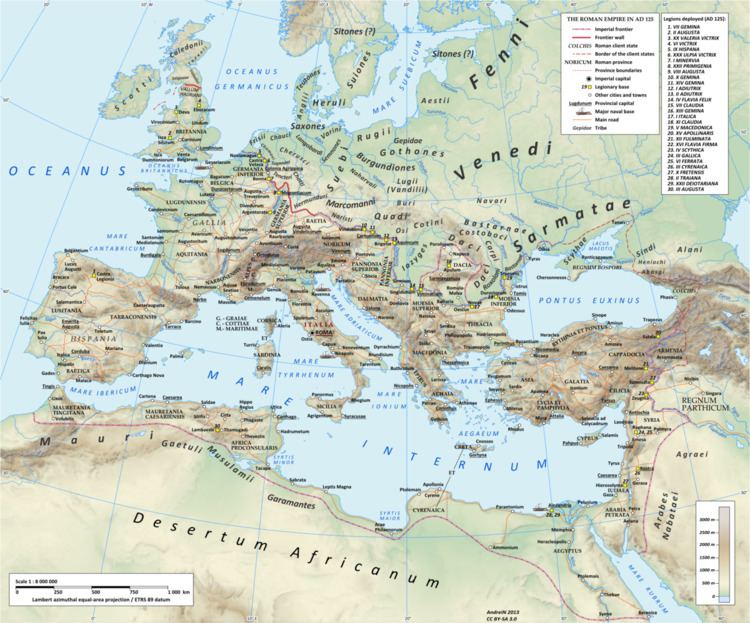 | ||
The Chatti (also Chatthi or Catti) were an ancient Germanic tribe whose homeland was near the upper Weser. They lived in central and northern Hesse and southern Lower Saxony, along the upper reaches of that river and in the valleys and mountains of the Eder and Fulda regions, a district approximately corresponding to Hesse-Kassel, though probably somewhat more extensive. They settled within the region in the first century B.C. According to Tacitus. The Batavians of his time were descended from a part of the Chatti, who left their homeland after an internal quarrel drove them out, to take up new lands at the mouth of the Rhine.
Contents
Proto-history
The extremely large timescale of Prehistoric Europe left stone tools and weapons dating from the Paleolithic to the Iron Age that were chronologically ordered and dated in the nineteenth and twentieth centuries. Tribes such as the Chatti, Cimbri, and Langobardi have not been well distinguished until relatively recently.
History
The Chatti successfully resisted incorporation into the Roman Empire, joining the Cheruscan war leader Arminius' coalition of tribes that annihilated Varus' legions in 9 AD in the Battle of the Teutoburg Forest. Germanicus later, in 15, raided their lands in revenge, but Rome eventually responded to the Chatti's belligerent defense of their independence by building the limes border fortifications along the southern boundary of their lands in central Hesse during the early years of the first century. A major raid by the Chatti into Germania Superior was defeated decisively by the legions in 50 AD.
Roman sources identify the fabled Mattium, beyond the Eder, as the capital of the Chatti. Destroyed by Germanicus, its location is not known today, but generally is assumed to be in the wider neighbourhood of Fritzlar north of the river Eder.
The Chatti eventually may have become a branch of the much larger neighboring Franks and their region was incorporated in the kingdom of Clovis I, probably with the Ripuarians, at the beginning of the sixth century.
In 723, the Anglo-Saxon missionary Winfrid—subsequently called St. Boniface, Apostle of the Germans—proselytizing among the Chatti, felled their sacred tree, Thor's Oak, near Fritzlar, as part of his efforts to compel the conversion of the Chatti and the other northern Germanic tribes to Christianity.
"Chatti" is probably the origin of the modern regional name "Hesse" through the High German consonant shifts.
Chasuarii and Chattuarii
Two tribes in northern Germany have names that are sometimes compared to the Chatti. The Chattuarii, whose name appears to mean that they are dwellers upon the Chatti lands, or else Chatti people, lived near the Rhine, probably between IJssel and Lippe. They came to be seen as Franks and apparently moved over the Rhine as a Frankish people, to settle into the corner of land between the Rhine and Maas rivers.
The name of the Chattuarii is in turn, sometimes compared to another people called the Chasuarii mentioned by several classical authors. The Chasuarii were a Germanic tribe mentioned by Tacitus in the Germania. According to him, they dwelt to the north of the Chamavi and Angrivarii, who dwelt in turn to the north of the Bructeri, between Ems and Weser, however the name of the Chasuarii most often is interpreted to mean "dwellers on the Hase [river]", a tributary to the Ems. The second century geographer Claudius Ptolemy mentions that the Kasouarioi lived to the east of the Abnoba mountains, in the vicinity of Hesse, but this account of northern Europe is thought to contain confusions derived from using different sources.
